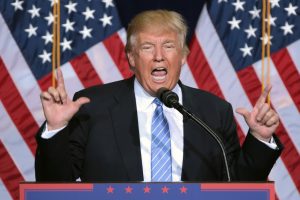by Ellie Geranmayeh
Intensive nuclear talks between Iran and various world powers this week in Oman did little to signal that a comprehensive deal is on track to meet its 24 November deadline. But then again, a similar mood surrounded the weeks leading up to the unprecedented interim deal signed almost a year ago. Events surrounding the recent Oman talks did however highlight two important issues. First, that Russia may play a crucial role in resolving differences over Iran’s enrichment capacity, which have been a major sticking point in negotiations thusfar. Second, that disagreement over the timetable for lifting sanctions imposed under UN Security Council (UNSC) resolutions might constitute a greater obstacle to fully concluding a deal on schedule than perhaps originally perceived.
A combination of trilateral and bilateral meetings between the US Secretary of State John Kerry, Iranian Foreign Minister Javad Zarif and the EU Coordinator Catherine Ashton took place in Oman, taking place from Sunday to Tuesday this week. These meetings were complemented by negotiations at the deputy director level between Iran and the EU3+3 (Germany, France, the UK, China, Russia and the US) in advance of what could potentially be the last stretch of talks, due to start next week in Vienna. Besides issues of enrichment and sanctions relief, negotiators also aim to reach an understanding over the exact duration of the proposed deal.
Since signing the Joint Plan of Action (JPoA) in November 2013, the EU3+3 have aimed to negotiate a comprehensive deal that restricts Iran’s ability to militarise its nuclear programme through four routes—namely through the Fordow and Natanz facilities, through the Arak heavy water reactor, and via covert means. Over this past summer, negotiators came close to agreeing on the future of operations at Fordow and Arak as well as an enhanced monitoring and inspection regime over Iran’s nuclear activities that could provide the only realistic way to trace potential covert nuclear activities. And in recent weeks, the two sides have reportedly come even closer to agreeing on a formula for quantifying Iran’s practical needs for enriched uranium.
Russian Overtures
The enrichment issue is being tackled through a number of technical solutions, including the reported narrowing of differences over the agreed-upon quantity of Iran’s centrifuges, as well as proposals that would give Russia a larger role than before in a final nuclear deal. Iran is thought to be giving serious consideration to the option of shipping a large portion of its low-enriched uranium to Russia. Besides centrifuge numbers, Iran’s enrichment capacity is also affected by the efficiency of its operating centrifuges, how its stockpile of enriched material is processed, and how this stockpile is retained. If Iran agrees to ship its uranium stockpile to Russia, these would be converted into fuel rods for Iran to use in running its Bushehr commercial nuclear plant. This conversion would provide reassurance for the EU3+3 by increasing the amount of time Iran requires to redirect this material to make a nuclear weapon.
Separately and in parallel to the Oman talks, Russia and Iran signed an agreement on Tuesday contracting Russia’s state-owned atomic power agency to provide additional nuclear power reactors to Iran’s Bushehr facility. Moscow has agreed to fuel these reactors for their lifetime and to remove their spent fuel rods to be stored in Russia. This has important implications for the nuclear talks because it reduces Iran’s medium-term practical needs for producing low-enriched uranium. Russia’s assistance with fuel fabrication helps Iran to sell a final nuclear deal at home because they can continue to pursue and eventually enlarge civilian nuclear energy on Iranian soil for a number of years. Meanwhile, Russia’s guarantee also functions as a safety cushion for the remaining EU3+3 partners, ensuring Iran’s enrichment capacity is capped for the duration of the deal.
As such, this side agreement between Iran and Russia is likely to be part of the larger EU3+3 framework for a final nuclear agreement. Despite tensions over Ukraine between Russia and some negotiating countries, the cohort has retained a uniform stance on the nuclear talks and upheld the application of sanctions. Of course,the cooperative role that Russia is playing in these talks has economic windfalls (rewarding state-owned companies that retain their competitive edge by providing and servicing Iran’s commercial nuclear reactors, for example) in addition to the political capital Moscow gains in the international community for its deeds (Russia’s recent overtures in the talks have been likened to its role in brokering the 2013 deal for the destruction of chemical weapons in Syria).
Sanctions
When it comes to sanctions relief, the focus of negotiations have shifted from the suspension and removal of US and EU unilateral sanctions (aimed at crippling Iran’s financial and oil sectors) to the timetable required for removal of sanctions imposed under a series of UNSC resolutions passed since 2006 that targeted Iran’s nuclear programme, research, and designated individuals.
While Iran understands that a complete lifting of sanctions will be a phased process, it has insisted that a comprehensive agreement should lead, at the very least, to the suspension of all nuclear-related sanctions. In return for making the concessions on enrichment, Iran wants to be confident that these sanctions will genuinely be lifted to enable the swiftest re-entry into the global market. While the EU3+3 has indicated it would be willing to offer front-loading of unilateral sanctions relief, it has asserted that easing sanctions imposed by the UNSC must be tied to, amongst other things, the clarifications of the potential military dimension of Iran’s nuclear programme. At this stage, this can only realistically take place over the duration of a final deal through the separate negotiating platform between Iran and the International Atomic Energy Agency.
November Deadline
As German foreign minister Frank-Walter Steinmeier noted this week, the negotiations are at a “make-or-break moment”. Nonetheless, it is highly improbable that there will be a complete breakdown in these negotiations if this month’s deadline is not reached. Where a comprehensive deal cannot be achieved, two options are now being discussed: to roll over the talks, or to agree on the general political parameters for a comprehensive deal while reaching an understanding that implementation would not begin until specific technicalities are resolved within an agreed-upon window of time. Both options carry risks, and the latter has been described as unworkable by negotiators given how deeply the issues of enrichment and sanctions relief permeate all aspects of the deal.
An extension of the talks is clearly preferable to a breakdown scenario and may persuade both sides to eventually compromise, but it poses downsides. Firstly, it buys time for non-nuclear-related factors to influence confidence-building in negative ways and for those opposing the diplomatic track to spoil the talks. Secondly, the current negotiations are essentially driven by committed leaderships, predominantly in the US and Iranian administrations. If the nuclear issue is unresolved and relations between the US and Iran remain in standoff mode, then – given expectations that the next US President,whether Democrat or Republican, will take a more hawkish stance on Iran – the likelihood of finalising a deal will worsen. However, if a nuclear deal has been achieved and a détente between the US and Iran deepens during a successful implementation phase, the next US President will find it more difficult to undermine the process, and perhaps be less interested in doing so. Finally, a second extension risks morphing these talks into an endless rollover stalemate scenario where neither side is willing to make the tough compromises needed for a final nuclear deal that enhances global security.
When questioned by one journalist about whether negotiators were making progress towards a deal in Oman, Zarif replied: “we will eventually”. Given recent developments that offer potential solutions on the enrichment issue (originally thought to be the toughest hurdle), negotiators must pressure their leaderships that this “eventuality”also has a shelf-life. Creative technical solutions are on the table and have, to a large extent, been exhausted. If there is going to be a final deal, both sides must make difficult concessions, whether it is now or in the future. The terms of a final deal will stand on their own merit and have categorically been de-linked from non-proliferation issues. But in a climate where both Iran and the West clearly need to develop a functional relationship in order to engage on areas of mutual interests (most imminently in fighting ISIS) and issues on which their interests diverge (such as Syria), logic dictates that if the two sides are committed to the diplomatic track and seek to avoid military confrontation, then there is little point in putting off the inevitable hard decisions on the nuclear file.
This article was originally published by the European Council for Foreign Relations and was reprinted here with permission.






The biggest obstacle might well be lifting sanctions from the USA’s side given the hawkish groups that are desperate to see negotiations fail. The President can waive the sanctions through executive action (and, in effect, kick the can down the alley until his successor arrives), but even that is not straightforward. He’s already planning to sign off through executive action on domestic policy issues which the House and Senate (both in Republican control now) oppose bitterly.
So if Obama has to choose which areas he will have to compromise on, he may well decide to let the Iran nuclear deal go. And what better way to do so after having manipulated the World into believing that the P5+1 are making the best possible deal in Iran’s interest, but Iran isn’t prepared to meet them midway. Sherman mentioned a while back that if the negotiations fail, it will be seen as Iran’s fault.
So if the strategy from the US perspective is to prepare for a ‘no deal’ situation, what better way to do this than to insist on something the Iranians cannot (and should not) accept (e.g. scaling back the number of centrifuges significantly). In doing so, the faithful media outlets can be played into making us believe the Iranian negotiating team was inflexible. And the beauty of it would be that the US administration would never have to deal with the real issue, i.e. if we (the US administration) do sign a deal with Iran, lifting sanctions will be a nightmare for us, so let’s not even go there; instead, let’s make sure we are not seen as the deal breakers.
I hope I am completely wrong!
I think if they don’t want to lift the sanction then iran should just walk away. If we are going to be under sanctions it is better to have bomb and live under sanction to not have the bomb and live under sanctions
Let’s keep our fingers and toes crossed.
Is there anything in this article that adds a cent to our knowledge? There is no new substance.
Regarding sanctions, it’s not just nuclear.
The “Iran nuclear crisis” was dreamed up as a fairly recent gimmick in the long-standing US goal of regime change in Iran. It’s a goodie and has staying power. But in a pinch the US also has other grievances which have been bases for US sanctions on Iran:
–human rights abuses
–development of unconventional weapons and ballistic missiles
–support for international terrorism
–deceptive banking
–computer and network disruption, monitoring, and tracking
–faulty elections
–evading sanctions